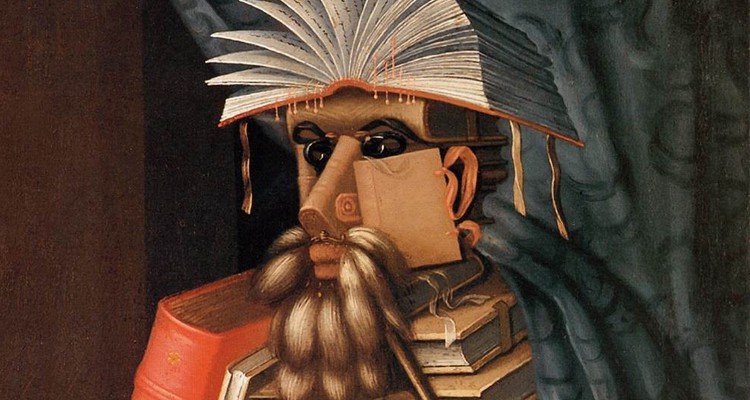Craft
Moral Craft: Issues of Plot and Prejudice

No novelist thinks herself racist. Yet sometimes I find myself enjoying a novel one moment and then spending the rest of the book reading to see whether the novel’s depiction of some character is racist or trying to say something incisive about racism. I have finished entire novels to determine the answer, like Doris Lessing’s iconic and mostly very good The Golden Notebook, in one part of which a group of Europeans ruins the lives of an African couple and moves on from the incident unscathed. I read the rest of the novel waiting to see whether this ruination — a lesson for the progressive narrator — would be reconciled with the stereotypical way the narrator actually depicts the couple, the man as an ignorant and loyal servant and the woman as a sexual object used by a European.
This kind of reading leads me to three questions: First, when and why does the reader blame the author for racist fiction? Second, how do we end up with racist fiction without racist intentions? And third, how does the writer addressing race avoid racist writing? All three questions have to do with prejudice, the gap between what one thinks and what one wants to think. Writing bridges a gap between thought and language (sometimes misread as the gap between the author and her work).
How do we end up with racist fiction without racist intentions?
Prejudiced writing is a moral concern and a craft concern, so I’m going to treat it as both. I should also admit that my concern comes from noticing a (mostly good) trend of white authors wanting to reflect the diversity of the real world by writing more characters of color.
In 1978, literary scholar Seymour Chatman discussed the existence of a “real author” and an “implied author” in his book Story and Discourse. “It makes no sense to hold the real Conrad responsible for the reactionary attitudes of [his] implied author,” Chatman states as an example, because the real Conrad wasn’t racist. The racism belongs only to his work, or more commonly argued, to his characters.
The late Chinua Achebe argued otherwise in 1977 in his famous critique of Conrad, “An Image of Africa.” But before I go there, I should try to explain what Chatman means by “implied.” Try this: The author writes her book to a certain audience — that’s the implied reader. From the book, the reader imagines the writer — that’s the implied author. Where it gets tricky is in the gaps between.
To show that Heart of Darkness’s implied racism is Conrad’s real racism, Achebe cites the scarcity of page-time, characterization, and dialogue given to Africans in the novel. He also addresses the exceptions, which are “an African woman who has obviously been some kind of mistress to Mr. Kurtz” and two instances of English speech amid the Africans’ usual “violent babble of uncouth sounds.” The exceptions are plot points — used by Conrad to cause an attack, contribute to the famous “horror,” and affect Marlow’s character arc.
Achebe heads off the objection that the racism is only Marlow’s and that Conrad is being ironic and critical:
Conrad appears to go to considerable pains to set up layers of insulation between himself and the moral universe of his history. He has, for example, a narrator behind a narrator. The primary narrator is Marlow but his account is given to us through the filter of a second, shadowy person. But if Conrad’s intention is to draw a cordon sanitaire between himself and the moral and psychological malaise of his narrator his care seems to me totally wasted because he neglects to hint however subtly or tentatively at an alternative frame of reference by which we may judge the actions and opinions of his characters. It would not have been beyond Conrad’s power to make that provision if he had thought it necessary.
That is, nothing in the book suggests a gap in racial perspective between any of the various levels of narration. Those levels are meant more to complicate the veracity of what happens in Marlow’s story than to complicate any racial view, which goes unquestioned. Even the exceptions when African characters get to speak only reinforce and affirm the prejudices of the narration.
If the real Conrad did not intend to be racist — as many critics argue while framing the novel as anti-colonialist, as if anti-colonialism precludes racism — he has not realized the effect of his prose. The discerning reader identifies a gap between the author’s thoughts and words: prejudice.
The discerning reader identifies a gap between the author’s thoughts and words: prejudice.
Achebe offers criticism but not solutions. So let us ask what an author with good intentions is to do? Perhaps the key is in what Achebe calls “hints” and what I am calling “gaps.”
The unreliable narrator is a good starting point. Here is a summary of a short story I got in a beginner workshop: An Irish fiddler in an Irish bar narrates his thoughts about the good old days. The musician for the night is announced, and it’s an Asian violinist. The narrator makes racial complaints about the Asian, but — phew — the Asian character is undeserving of such vitriol. The reader understands a fallible narrator. But at the end of the story, the narrator gets onstage and shows up the Asian kid by playing the fiddle so well that the crowd is moved for the first time.
The author of this story didn’t intend to write racist fiction. In his workshop, we approached the piece on a craft level, addressing the lack of a gap between what happens and what the narrator says. The plot, rather than defying the narrator’s racism, supports it.
Real prejudice has seeped onto the page. The “implied” author hasn’t contradicted it because the real author hasn’t realized that the story’s view is the same as the narrator’s.
I actually read workshop stories like the one about the Irish fiddler fairly often. Sometimes I think I have Flannery O’Connor to blame. Early in the schedule, I like to teach her famous story “A Good Man Is Hard to Find,” in which a prejudiced white grandmother ends up indirectly causing her family’s deaths, but at the end experiences a pre-death “moment of grace,” her glimpse of real empathy and/or real Christianity. In that moment, the story both lifts the grandmother out of her ignorance and shows us that the story thinks she is ignorant, too. My students who try to write like O’Connor sometimes forget to defy the opinions of their grandmother-types.
Hilton Als, in his essay on O’Connor, “This Lonesome Place,” writes that “[O’Connor’s] black characters are not symbols defined in opposition to whiteness . . . She didn’t use them as vessels of sympathy or scorn; she simply — and complexly — drew from life.” How did she do so while allowing her white characters to be realistically racist and placing them in the center of her stories? “Vessels” is an important word. Conrad’s Africans are vessels for European plot and arc and theme. The (real) author, if she is to create without prejudice, has to exercise moral craft. The writing of fiction cannot treat marginalized characters as vessels, cannot let the plot play out the racism of under-enlightened protagonists. Perhaps the ultimate conclusion is that one cannot write without prejudice unless one understands that one has prejudice. O’Connor, whose prejudice does appear sometimes, nonetheless understood the prejudice of the South as well as any white Southern writer of her time. “A Good Man Is Hard to Find” is, in part at least, about that prejudice, and only by addressing it as prejudice is the author able to critique prejudice and avoid writing a prejudiced text.








